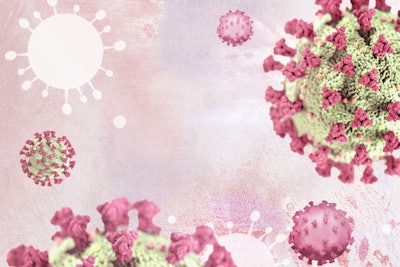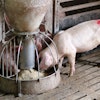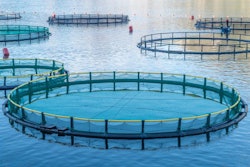
National Pork Board CEO says the industry’s foreign animal disease preparation helped it navigate the pandemic
While the novel coronavirus (COVID-19) is a human disease, the U.S. pork industry was able to utilize its preparation for foreign animal diseases to cope with it, and learned valuable lessons as a result.
Speaking during the Kansas Department of Agriculture’s 2020 Kansas Ag Growth Summit virtual session on the pork sector, National Pork Board CEO Bill Even said the nation’s pork industry implemented an incident coordination center to communicate with stakeholders and public near the beginning of the COVID-19 pandemic.
“When the first plants started to close just before Easter, we recognized that this was going to cascade rapidly and, certainly, it did,” he said.
The industry’s response focused on three priorities, Even said:
- Get plants back operational as quickly as possible. “Everybody recognized that, the longer the plants were either shut down or slowed down, there were going to be some fundamental problems with backup of hogs,” he said.
- Emergency depopulation and disposal. Producers in Minnesota, Iowa, South Dakota and Nebraska were affected the most, but each region was hit at a different time. The need to depopulate “ebbed and flowed” based on where the producers were in growing cycle, Even said.
- Proactively promote pork as a brand. “We recognized that the pork industry was getting a lot of media attention, from the plant shutdowns, looking to make sure the workers were safe, to the backup of the hogs and emergency depopulation, and then consumers worried about their ability to get meat as they were sheltering at home as well,” he said.
Additionally, the National Pork Board produced resources for producers including information on raising pigs outdoors, employee health, depopulation and disposal record-keeping, a euthanasia manual, and equipment providers; webinars designed to inform producers about what was going on and where they could turn for help and advice; and a weekly enewsletter.
Lessons learned
Even said its COVID-19 response taught the pork industry some important lessons.
“We’ve done some really good planning for a foreign animal disease, but … if we had to depopulate a large number of hogs due to, say, African swine fever, we had the plans and the templates there, but we weren’t quite ready,” he said. “In some ways, if there’s any silver lining in all of this, it was the realization of where we have some gaps in things we need to finish up.”
He also said the National Veterinary Stockpile was found to be lacking in some resources, but now the U.S. Department of Agriculture is working to correct that.
“That’s another example of good after-action planning of, ‘OK, we’ve got a gap, we’ve got to get on top of this and fix it,’” he said.
The crisis also revealed research opportunities, and Even said the National Pork Board and Pork Checkoff set up and deployed a series of research proposals and projects in 11 days at the start of the pandemic.
View our continuing coverage of the novel coronavirus (COVID-19) pandemic.











